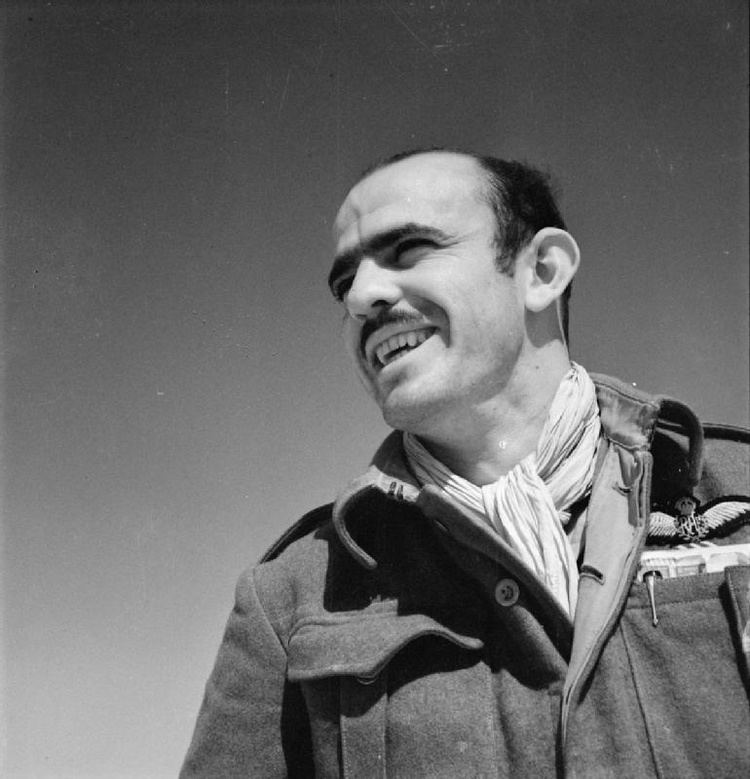Nickname(s) Wildcat Name Lance Wade Allegiance United Kingdom | Years of service 1940–1944 Rank Wing commander Service number 68717 | |
 | ||
Battles/wars World War IIWestern Desert CampaignItalian Campaign Awards Distinguished Service OrderDistinguished Flying Cross & Two Bars Battles and wars World War II, Western Desert Campaign, Italian Campaign Unit No. 33 Squadron RAF, No. 145 Squadron RAF | ||
Wing Commander Lance Cleo "Wildcat" Wade DSO, DFC & Two Bars (1915 – 12 January 1944) was an American pilot who joined the Royal Air Force (RAF) during World War II and became a flying ace. He remained with RAF until his death in a flying accident in 1944 in Italy. He was described as a "distinguished American fighter ace who epitomized perhaps more than any other American airman the wartime accords between Britain and the United States."
Contents
Early life
Wade was born in the small farming community of Broaddus, Texas in 1915. He was the second son of Bill and Susan Wade, who named him L.C. (only after the RAF demanded a forename did he call himself Lance Cleo Wade). After the family moved to a farm near Reklaw, Texas in 1922 he worked on the family farm and attended the local school. He was unable to join the US Army Aviation Cadet Program due to a lack of a college education. He began flying at age 17, at Tucson, Arizona. In 1934 at age 19, Wade joined the Civilian Conservation Corps (CCC) in Arizona.
Military career
He joined the RAF in Canada in December 1940 and trained with No. 52 Operational Training Unit (OTU). Wade was then sent to the British aircraft carrier Ark Royal and flew off her deck in Hawker Hurricane to reinforce the depleted ranks of aircraft on the island of Malta. He was then sent to Egypt as a Hawker Hurricane Mk I pilot in September 1941, and was posted to 33 Squadron. The squadron's mission was to provide close air support for Operation Crusader, the British assault launched on November 18, 1941, against the German Afrika Korps. His first kills were two Fiat CR.42s on 18 November. He attained the rank of "ace" on 24 November 1941. He began flying Hurricane Mk IIs in April 1942, and was awarded the Distinguished Flying Cross (DFC). He had 13 victories as of September 1942.
He spent the next several months back in the US on various RAF projects including evaluating some American fighters at Wright Field.
He returned to combat as a Flight Commander in 145 Squadron with a Bar to his DFC, flying Supermarine Spitfire Mk Vs. Promoted to squadron leader, he had a busy 60 days, as by the end of April his score was 21, by then flying Spitfire Mk IXs. His squadron moved to Italy, and as a Spitfire VIII pilot he claimed two Focke-Wulf Fw 190s of Schlachtgeschwader 4 on 2 October 1943. His last claims were three FW 190s (again of SG 4) damaged on 3 November.
Wade became a wing commander and joined the staff of the Desert Air Force but was there only briefly, as he was killed in a flying accident on 12 January 1944 at Foggia, Italy.
In 30 fights for which he made claims he was credited with 23 victories (including two shared), one probable, and 13 damaged. He is also credited with one destroyed and five damaged on the ground.
Wing Commander Wade is usually listed with 25 victories but official RAF records show that he had 22 solo victories and half each of two more for a total of 23, not counting one probable. Regardless of whether his score is 25, or 23 victories, he is still the leading American fighter ace to serve exclusively in any foreign air force.
Since he never transferred to the USAAF, or any other American Air service, Wade never got the publicity that other American aces received and thus is more obscure than his peers.
Honours and awards
Since being awarded the Distinguished Flying Cross this officer has destroyed 7 enemy aircraft thus bring his total victories to 15. In September, 1942, during a reconnaissance patrol his aircraft was attacked by some 8 Italian fighters. Flight Lieutenant Wade, however, fought them off. By his skill and determination he contributed materially to the success of the reconnaissance and much valuable information was obtained. Flight Lieutenant Wade's courage and
devotion to duty has been an inspiration to all.
the leader of a squadron which has achieved much success in recent operations. During March, 1943, the squadron destroyed 21 enemy aircraft, 4 of which were shot down by Squadron Leader Wade. By his great skill and
daring, this officer has contributed materially to the high standard of operational efficiency of the squadron he commands. Squadron Leader Wade has destroyed 19 enemy aircraft.
